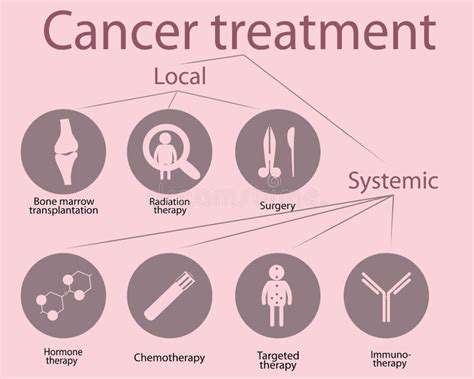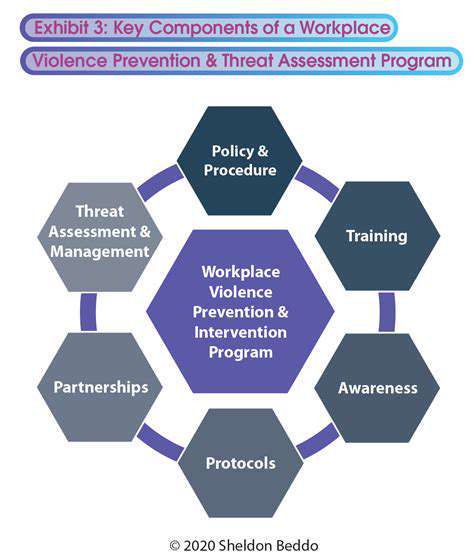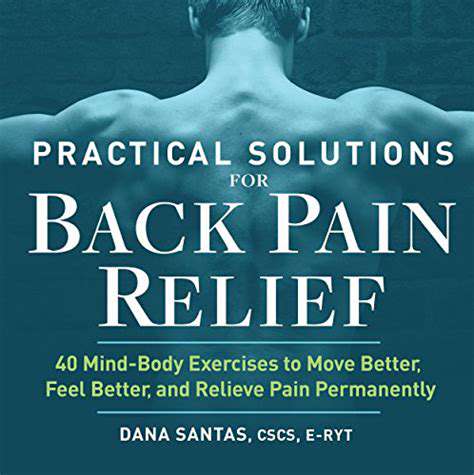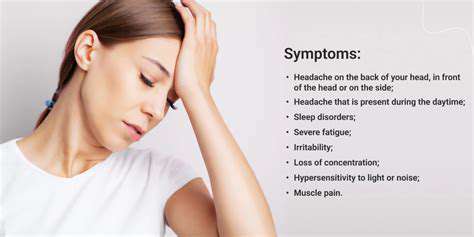Severe Head Pain on Right Side: Understanding Symptoms and Solutions
Table of contents
Stress and tension are primary triggers for right side head pain.
Certain foods can also contribute to right side head pain symptoms.
Sinus issues and dental problems may cause right side head pain.
Migraines and cluster headaches commonly lead to severe head pain.
Serious conditions include stroke and brain tumors as potential causes.
Lifestyle changes can help manage right side head pain effectively.
Medication may alleviate symptoms but a proper diagnosis is crucial.
Tracking triggers can aid in preventing severe headaches over time.
Emergency care is critical for sudden, severe head pain symptoms.
Long-term management involves holistic approaches and stress reduction techniques.
What Triggers Right Side Head Pain?
Common Triggers for Right Side Head Pain
One of the most common causes of right side head pain is tension or stress, which can lead to muscle contractions in the neck, face, and scalp. This can cause a range of symptoms, from mild aches and pains to severe headaches that can last for hours. Additionally, certain foods such as processed meats, cheeses, and fermented foods can trigger right side head pain in some individuals due to their high sodium, sugar, and tyramine content.
Other common triggers for right side head pain include sinus infections, allergies, and environmental factors such as pollution, noise, or changes in weather. Furthermore, dental issues such as toothaches, gum disease, or temporomandibular joint (TMJ) disorder can also cause right side head pain. It is essential to visit a healthcare professional for a proper diagnosis and treatment plan to address these underlying issues.
Underlying Medical Conditions
Right side head pain can be a symptom of various underlying medical conditions, including migraines, cluster headaches, and meningitis. Migraines, in particular, can cause intense, throbbing pain on one side of the head, often accompanied by sensitivity to light and noise. Cluster headaches, on the other hand, are typically characterized by severe, piercing pain on one side of the head, often accompanied by tearing and redness of the eye on the same side.
Other medical conditions that may cause right side head pain include stroke, brain tumors, and sinusitis. In some cases, right side head pain can be a symptom of a serious underlying condition, such as a blood clot or aneurysm. If left untreated, these conditions can lead to permanent damage or even death. Therefore, it is crucial to seek immediate medical attention if you experience severe, persistent, or unusual head pain.
Managing and Treating Right Side Head Pain
Managing and treating right side head pain often involves a combination of lifestyle modifications, stress management techniques, and medication. Regular exercise, a balanced diet, and adequate sleep can help reduce stress and alleviate right side head pain. Stress management techniques such as meditation, deep breathing, and yoga can also help reduce muscle tension and promote relaxation.
Over-the-counter pain medications such as acetaminophen or ibuprofen can provide temporary relief from right side head pain. However, it is essential to consult with a healthcare professional before taking any medication to determine the underlying cause of your symptoms and develop an effective treatment plan. In some cases, prescription medications or alternative therapies such as acupuncture may be necessary to manage right side head pain effectively.
Symptoms and Signs of Right Side Head Pain
Common Causes of Right Side Head Pain
Head pain on the right side can arise from a variety of underlying causes, each of which can present with distinct symptoms. Tension headaches are perhaps the most prevalent, often manifesting as a dull, aching sensation that may feel like a band of pressure. These headaches can result from stress, lack of sleep, or muscle strain in the neck and shoulders, contributing to the discomfort that many experience.
Another common source of right side head pain is migraines, which can be debilitating and often come with additional symptoms such as nausea, vomiting, or sensitivity to light and sound. Migraines may be triggered by specific foods, hormonal changes, or environmental factors, making it essential for sufferers to identify and manage these triggers effectively.
Cluster headaches present a more severe pain and are characterized by intense episodes that occur in a cyclical pattern. They typically affect one side of the head and can lead to tearing or nasal congestion on the affected side. Understanding these triggers can help mitigate the frequency and severity of the headaches.
Sinus infections can also cause right side head pain, particularly if the right sinus cavities are inflamed or blocked. Accompanying symptoms may include facial pain, nasal discharge, and fever. It’s crucial to address sinus issues promptly to avoid further complications and to relieve symptoms effectively.
Differentiating Symptoms for Effective Diagnosis
Understanding the symptoms accompanying right side head pain is vital for effective diagnosis and treatment. For instance, if the pain is sharp and sudden, it may indicate a more serious condition such as a stroke or an aneurysm. Immediate medical attention is critical in these scenarios to prevent lasting damage or complications.
On the other hand, a throbbing pain that alternates with periods of relief is often characteristic of migraines. Identifying whether the pain is unilateral or bilateral can also offer clues regarding its origin. Bilateral pain may suggest tension-type headaches, while unilateral pain is more common in migraines and cluster headaches.
The temporal association of symptoms can also help in diagnosing the cause of the right side head pain. For example, if the pain coincides with visual disturbances or aura, it likely points towards migraine. Meanwhile, symptoms like dullness in the facial area or difficulty breathing could suggest sinus-related issues.
In addition, accompanying symptoms such as changes in vision, imbalance, or severe nausea should never be ignored, as they can indicate more grave health concerns. Keeping a headache diary can be a useful tool for healthcare providers to better understand the frequency, triggers, and characteristics of the pain experienced, allowing for a more tailored treatment approach.
Diagnosis and Treatment Options

Understanding Diagnostic Methods
When experiencing severe head pain, it is crucial to consult a healthcare professional for an accurate diagnosis. A comprehensive evaluation often includes a detailed medical history and a physical examination. This systematic approach helps in identifying the underlying causes of the pain, which may range from migraines to serious neurological disorders.
Imaging tests such as CT scans and MRIs can provide valuable information about the structures of the brain. These technologies use advanced techniques to detect anomalies, tumors, or other conditions that may contribute to pain. Accurate imaging is essential for tailoring the right treatment plan based on the specific diagnosis.
In some cases, additional tests like blood tests or lumbar punctures are necessary to rule out infections or inflammatory conditions. A neurologist might also conduct specific tests to evaluate the function of the nervous system. Understanding these diagnostic methods empowers patients to engage actively in their health management.
Common Treatment Options for Severe Head Pain
Treatment for severe head pain varies depending on the diagnosis determined by healthcare professionals. Common options include medication, lifestyle changes, and alternative therapies. Medications like analgesics, triptans, or anti-inflammatory drugs are often prescribed to manage pain effectively.
In addition to medication, preventive therapies may be recommended for recurring headaches. These can include daily medications aimed at reducing the frequency and severity of attacks. Furthermore, maintaining a healthy lifestyle with regular exercise and a balanced diet can contribute significantly to the management of head pain.
Alternative therapies such as acupuncture, chiropractic treatment, or cognitive behavioral therapy may also offer relief for some individuals. Patients are encouraged to explore these options and consider a multidisciplinary approach for comprehensive management.
Importance of Identifying Triggers
Identifying personal triggers is vital for effective management of severe head pain. Common triggers include stress, certain foods, and changes in sleep patterns. Understanding these factors can help patients avoid situations that may lead to painful episodes. Keeping a headache diary can be beneficial as it allows individuals to track their symptoms and identify patterns over time.
For some, hormonal changes can significantly impact the frequency and intensity of headaches. Monitoring hormonal fluctuations, particularly in women, can aid in understanding and mitigating these episodes. This personalized insight serves as a powerful tool in headache management.
In addition to external triggers, psychological factors like anxiety and depression often exacerbate head pain. Engaging in stress-reduction techniques such as mindfulness, yoga, or counseling can effectively alleviate symptoms. Addressing both mental and physical health is essential for a holistic approach to treatment.
When to Seek Emergency Care
While many headaches are benign, there are situations in which severe head pain necessitates immediate medical attention. Symptoms such as sudden onset of extreme headache, loss of consciousness, or neurological changes warrant urgent evaluation. These could indicate serious conditions such as strokes, ruptured aneurysms, or severe infections.
Other alarming symptoms include persistent vomiting, visual disturbances, or disorientation. If headaches are accompanied by these symptoms, it is crucial not to delay seeking care. Early intervention can significantly impact outcomes in life-threatening situations.
It is also essential for patients with pre-existing health issues such as hypertension or a history of migraines to remain vigilant. Regular communication with healthcare providers about any changes in symptoms is vital for safe and effective management. Recognizing the signs of danger is critical for preserving overall health.
Long-term Management Strategies
Long-term management of severe head pain involves a comprehensive approach tailored to individual needs. Patients are encouraged to establish a consistent care plan that includes routine check-ups and medication adherence. This proactive strategy helps in managing symptoms efficiently and improves quality of life.
Incorporating stress management techniques into daily routines can also make a significant difference. Activities such as yoga, meditation, and deep-breathing exercises promote relaxation and may help reduce the intensity and frequency of headaches. Patients should explore different relaxation modalities to find what works best for them.
Lastly, strong support systems are invaluable. Engaging family members or joining support groups can provide emotional reassurance and share coping strategies. Building a network of understanding individuals can empower patients to navigate their health challenges more effectively.
Prevention and Management Strategies

Understanding the Triggers of Severe Head Pain
Identifying the triggers of severe head pain is a crucial first step in prevention. Many individuals experience episodic headaches that can escalate into debilitating pain due to various factors. It is essential to maintain a headache diary, where individuals can log the frequency and intensity of their headaches, along with possible triggers. This method allows individuals and their healthcare providers to spot patterns that can inform management strategies. The most common triggers include stress, dehydration, poor sleep, and certain dietary items like caffeine or alcohol.
Environmental factors play a significant role as well. For example, exposure to bright lights, loud noises, and strong odors can trigger headaches in some people. By being aware of these stimuli, individuals can take proactive steps to avoid them, thus reducing the frequency of their severe head pains. Additionally, seasonal changes and weather patterns can also be influential in triggering headaches in those sensitive to barometric pressure changes.
Another crucial aspect is hormonal fluctuations, particularly in women. Many women notice that their headaches become more intense during menstruation or during hormonal changes related to pregnancy or menopause. Recognizing and consulting with healthcare professionals regarding these patterns can be beneficial in finding effective management strategies.
Additionally, lack of physical activity often correlates with heightened pain occasions. Regular exercise not only improves overall wellness but can also reduce stress and tension, which are common headache triggers. Efforts to incorporate physical activity into daily routines may have beneficial effects on frequency and intensity of head pain.
Lifestyle Changes for Effective Pain Management
Implementing lifestyle changes can significantly alleviate the severity and frequency of headaches. Proper hydration is paramount as dehydration often leads to headache exacerbation. Individuals should strive to drink adequate amounts of water throughout the day and consume foods high in water content, such as fruits and vegetables.
Dietary management is equally vital; maintaining a balanced diet can contribute to better overall health and mitigate headache occurrences. Avoiding highly processed foods, excessive caffeine, and artificial additives can also make a difference. When individuals pay attention to their nutritional intake, they often find a correlation between certain foods and headache triggers. Keeping a food diary may illuminate food sensitivities that could be contributing to severe head pains.
Sleep hygiene is another critical element. Poor sleep quality or insufficient rest can significantly impact psychological and physical health. Establishing a consistent sleep routine, which includes a calming pre-bedtime ritual, can enhance sleep quality and reduce headaches. Individuals should aim for at least 7-9 hours of sleep each night for optimal brain and body function.
Furthermore, engaging in stress-reduction techniques such as yoga, meditation, or mindfulness practices can help individuals manage headache symptoms. These techniques not only promote relaxation but also improve emotional resilience. Incorporating such practices into daily life may lead to reduced tension and pain.
Seeking Medical Intervention and Treatment Options
When lifestyle modifications don't yield desired results, it may be necessary to seek professional medical interventions. Consulting a healthcare provider should be one of the first steps taken when severe headache episodes become recurrent or worsen. Providers may conduct thorough evaluations to rule out any underlying medical conditions that could be prompting the severe head pains.
Medication is a common recommendation for managing severe headaches. Options range from over-the-counter pain relievers to prescription medications tailored for chronic headache sufferers. The appropriate medication will depend on individual diagnosis and the type of headaches being experienced, such as tension-type, migraine, or cluster headaches. Having a personalized treatment plan is essential for effective pain management.
Additionally, preventive treatments may also be suggested for individuals with frequent headaches. These can include daily medications aimed at reducing the frequency or severity of the headaches over time. Education on how to correctly use these medications can empower individuals to effectively manage their pain.
Other therapeutic avenues may include physical therapy, acupuncture, or chiropractic adjustments, which can be effective for some individuals. These alternative treatments are designed to address the physical aspects contributing to headache pain, often providing relief without the side effects associated with medications.
Incorporating Holistic Approaches
Exploring holistic approaches can complement traditional treatment methods for severe head pain management. Techniques such as aromatherapy, which utilizes essential oils to promote relaxation, can be integrated into self-care routines. Scents like lavender and peppermint have been known to have soothing properties, aiding in headache relief.
Moreover, engaging in regular mindfulness meditation can enhance awareness of body sensations and emotional triggers related to headaches. This practice fosters a deeper understanding of stressors and their connections to head pain, enabling individuals to manage both better. Developing a mindful approach to life can lead to long-term relief from suffering associated with severe headaches.
Nutrition, as previously discussed, can be approached from a holistic perspective as well. Incorporating herbal supplements and natural anti-inflammatory foods may support overall health and reduce headache occurrences. It is wise to consult with a nutritionist or healthcare professional prior to introducing new supplements to ensure they do not interfere with existing treatments.
Finally, creating a supportive environment by surrounding oneself with understanding friends and family can also significantly impact headache management. People living with chronic pain often benefit from social connections and emotionally supportive relationships. This kind of environment not only provides emotional relief but can also encourage individuals to adopt and maintain healthy practices for headache management.




